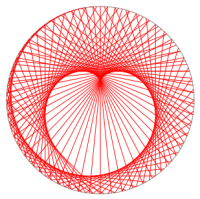2014年
我本来想着从Florida回到Columbus就为2014写点东西,可是一直拖延到了今天眼看着新的学期快开始了才急急忙忙着手这事。其实写年度总结之类的博文还是挺有趣的,能看看自己这一年以来做过什么趣事傻事、做出什么样的进步。
2014年我经历了哥村的零下20度,听了马友友的小提琴,暑假回国跟亲人好友见面,过了口语可以教书,选了导师成了Tango Club的President,第一次教书是教微积分1,现在在Florida的迪士尼等烟花。新年快乐。
这是我在2014年最后一天发的微博,发微博的时候我正在迪士尼外面的停车场等凌晨的烟花,心情实际上并不是兴奋而是有点因孤单而生出的伤感。迪士尼并不适合单身一人游玩,一个人行走在拥挤且快乐的人群里总是有点尴尬,以至于我在一个小岛的岸边静静地坐了一个下午,看着一艘轮船一圈又一圈地环绕着小岛。晚上八点半左右我就从迪士尼里出来了,回到停车场的巴士上了。让我想不到的是已经有人比我先回到了巴士上了,是一群男生,所以我也不是太惊讶了。这次出来Florida玩我是跟团的,只是团里的人我一个不认识。跟一群陌生的人出去玩是一件很有挑战性的事情:他们基本上都是三三两两认识的人参团的,我要做的第一件事情就是打进“敌人”内部,难度在于我要用我那蹩脚的英语进行这项任务。后来我是跟一个来自印度尼西亚的家庭混熟了,母亲是OSU的博士(可是看起来比我母亲大人还老啊),父亲和女儿跟了过来在美国这边生活。他们就坐在我对面,聊起来也实在方便,在旅途的车上,有人能对上话倒也不至于太无聊。这次出来玩了一个星期,除了在迪士尼那天之外,我还是玩得挺开心的。在旅途的最后一天,我还很幸运地见到了一位高中同学。说起这件事也是挺巧合的,最后一天我们再次来到了环球影城,我在冒险岛开心游荡着,很快就把我感兴趣的点玩遍了(single rider太贴心了)。在下午两点的时候,我就打算离开了,走到大门刷了一下朋友圈竟然发现一位高中同学刚发了一张环球影城里的黄油啤酒的图。于是我又跑到哈利波特那里坐了趟列车到环球影城那边与朋友见上一面。与朋友见面的地方是我前天去的时候没有去过的地方,我也在她的推荐下尝了那美味的黄油啤酒。这旅途的惊喜,让我感到十分高兴。

